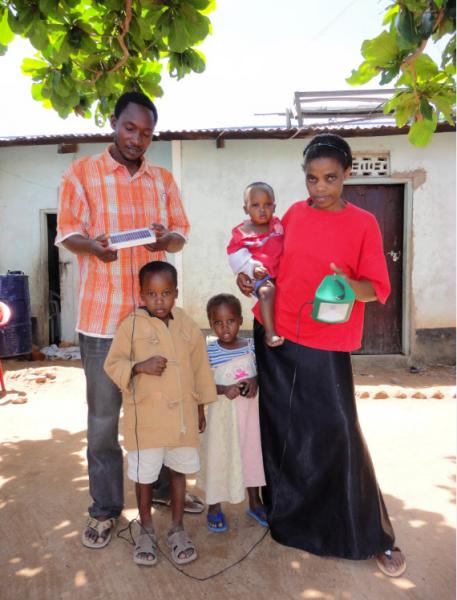Coordination between policy makers and private partners is key to developing solar energy in Africa, said photovoltaic expert Michael Franz as he presented impressions and conclusions of his extensive work on the development of a solar energy market in Kenya at a recent conference in Brussels.
Dramatic cost reductions in solar photovoltaic devices are making it increasingly economically viable to improve access to solar energy in Africa but opportunities are lost because policy and regulatory frameworks, and development instruments, are not yet adapted, said Michael Franz, project manager at the EU Energy Initiative Partnership Dialogue Facility.
Drawing his conclusions from several years of working in the Kenyan energy sector, he pointed out that a number of the conditions and lessons learnt are similar to those of other countries in Sub-Saharan Africa.
Kenya is characterized by an electrification rate of 15-20 % only and a growth of electricity demand of 5-8% per annum, in a country that has a GDP growth rate of 4,3 %.
In such context, as in most Sub-Saharan Africa, over 80 % of the primary energy consumption remains for domestic use only, mostly in traditional biomass. At the same time, access to electricity is a requirement for many productive and social uses. It is widely argued that increasing the access figures will require not only public investment, but also a substantial uptake of private sector activity.
Franz pointed out that for solar energy in particular, maturing technology and economics of scale are currently generating a massive potential for increasing access and investment. His key point, however, is that in most countries, the policy and regulatory environment does not yet allow for this potential to be realized. Essential regulatory requirements for doing business, both on- and off-grid, are not in place yet in most cases, with notable exceptions. As specific examples of key barriers, he identified standards for solar equipment or services, access to the grids and energy pricing and tariffs, and concessions for rural electrification.
He also discussed the role of development partners. He cited examples of how instruments, as well as approaches, promoted by development cooperation have yet to reflect the rapid developments in the solar energy market. In his view, there is a persistent lack of interventions effectively responding to the needs of the private sector in energy access ventures.
As a prominent example, Franz highlighted the new emerging markets of private solar energy consumption.
Replacing expensive and polluting kerosene lamps, solar lanterns (“pico-pv”), which cost $30 each to buy, remain a luxury for households in rural Kenya and elsewhere in Africa. This is despite minimal running costs, and payback periods often measured merely in months, compared to a product lifetime of several years. In order to equip these households, Franz said development practitioners should build on the capacities of micro-finance institutions and build partnerships with private partners, whom he generally sees as the “agents of transformation” in energy consumption.
“We can still benefit a lot more from exchange with the private sector. We need to understand better what the private sector requires, and what exactly we as development partners can do. In fact, our objective should not focus so much on implementing energy projects but rather on promoting the development of sustainable energy markets,” he said.
Another example of an upcoming market is self-consumption for grid-connected users. In many countries, producing solar power has, or will in the near future, become cheaper than grid-electricity. This could bring down power costs, increase grid stability, generate local value-addition and employment, and substitute more polluting electricity sources.
Franz cited several key areas where development partners could make a difference: reducing the high upfront costs through credit lines, reducing financing costs as a factor of the perceived risk through risk mitigation instruments, developing capacity of local companies for design, installation and maintenance of solar systems, and supporting governments to put in place the required policies and regulations.
On the latter aspect, Franz mentioned that this is an area currently being addressed through the EU Energy Initiative – Partnership Dialogue Facility, with funding from the European Commission.
“We have to decide in this case to work hand in hand with a project implemented by local partners and supported by the Agence Française de Développement (AFD). Our project will support the development of regulatory capacity. The objective is to work with the private sector and the public authorities in Kenya to find the best model for effectively regulating and thereby enabling investment in these markets.”
He also stressed that engagement with partners on the ground, through equipped bodies such as industry associations, could perform as a vehicle to outreach private and public sectors.
|
Further Information: Please visit capacity4dev's Public Group on Energy, and the Energy topic. The case study for the BEST RAY Tanzania project, funded by the ACP/EU Facility, can be viewed here. Examples of successful projects utilizing solar energy, while developing the private sector: Energy Generation and Supply, the Developing Energy Enterprises Project in East Africa DEEP EA Eau et Energie : Programme Regional Solaire: Combiner l'alimentation en eau potable aux nouvelles technologies energetiques Read an analysis of 15 projects financed under the ACP-EU Energy Facility, using solar pv to improve rural access to electricity. Visit the ACP/EU Monitoring website. |
This collaborative piece was drafted with input from Michael Franz from the EU Energy Initiative Partnership Dialogue Facility (EUEI PDF), and Arnaud de Vanssay with support from the capacity4dev.eu Coordination Team.
Photo © European Communities. Courtesy of the GVEP International project financed by the ACP-EU Energy Facility




Log in with your EU Login account to post or comment on the platform.